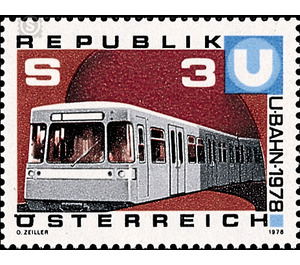opening - Austria / II. Republic of Austria 1978 - 3 Shilling
Theme: Traffic, Transportation & Mobility
| Country | Austria / II. Republic of Austria |
| Issue Date | 1978 |
| Face Value | 3.00 |
| Color | multi-colored red |
| Printing Type | Photogravure |
| Stamp Type | Commemorative |
| Item Type | Stamp |
| Chronological Issue Number | 910 |
| Chronological Chapter | OOS-OE2 |
| SID | 707681 |
| In 68 Wishlists | |
The Vienna City Council approved in January 1968 the construction of the basic network of the Vienna subway. In 1970, the City of Vienna organized a competition for the design of the underground to find particularly qualified professionals for the accomplishment of the tasks in the course of this project. The subway base network consisted of the lines U1, U2 and U4 and was the basis for the further development of the subway network to its present capacity. The subway stations were inserted as organically as possible into the cityscape. Emergency call facilities, television cameras and monitors on the platforms ensure optimum safety in the station areas. A modern "Linienzugsbeeinflussungssystem" allows throughout the route to transmit continuous driving and braking commands from the tracker on the train and to constantly control the execution of these commands by automatic. The signaling and safety system enables central monitoring of the subway lines from a control center. The eight-axle twin-rail cars are bidirectional cars, which are connected by a close coupling. The car bodies rest on four biaxial bogies and have a pneumatic cushion suspension. The brand image shows a subway car.


